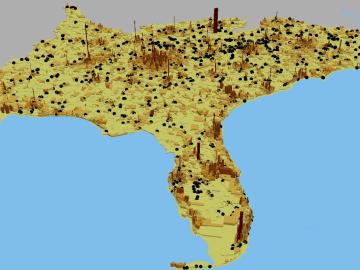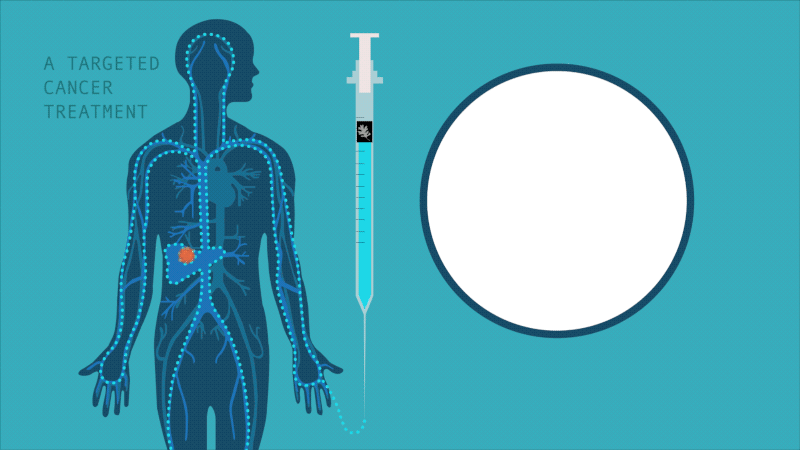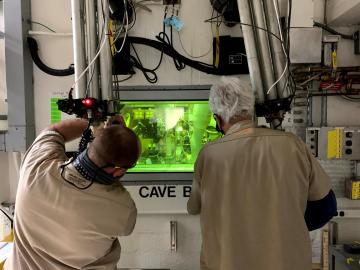
Filter News
Area of Research
- Advanced Manufacturing (2)
- Biological Systems (1)
- Biology and Environment (109)
- Biology and Soft Matter (1)
- Computational Biology (1)
- Computational Engineering (1)
- Computer Science (2)
- Energy Science (72)
- Fusion and Fission (11)
- Fusion Energy (1)
- Isotopes (24)
- Materials (47)
- Materials for Computing (4)
- National Security (31)
- Neutron Science (27)
- Nuclear Science and Technology (11)
- Quantum information Science (1)
- Sensors and Controls (1)
- Supercomputing (69)
News Type
News Topics
- (-) Advanced Reactors (24)
- (-) Artificial Intelligence (112)
- (-) Bioenergy (93)
- (-) Biomedical (59)
- (-) Environment (154)
- (-) Isotopes (53)
- (-) Machine Learning (50)
- (-) Partnerships (67)
- (-) Security (28)
- 3-D Printing/Advanced Manufacturing (104)
- Big Data (53)
- Biology (106)
- Biotechnology (35)
- Buildings (45)
- Chemical Sciences (70)
- Clean Water (18)
- Composites (23)
- Computer Science (174)
- Coronavirus (36)
- Critical Materials (16)
- Cybersecurity (31)
- Education (5)
- Element Discovery (1)
- Emergency (3)
- Energy Storage (75)
- Exascale Computing (64)
- Fossil Energy (7)
- Frontier (60)
- Fusion (54)
- Grid (48)
- High-Performance Computing (113)
- Hydropower (6)
- ITER (6)
- Materials (111)
- Materials Science (111)
- Mathematics (8)
- Mercury (9)
- Microelectronics (4)
- Microscopy (40)
- Molten Salt (5)
- Nanotechnology (46)
- National Security (78)
- Neutron Science (136)
- Nuclear Energy (94)
- Physics (60)
- Polymers (22)
- Quantum Computing (48)
- Quantum Science (79)
- Simulation (52)
- Software (1)
- Space Exploration (16)
- Statistics (3)
- Summit (62)
- Transportation (56)
Media Contacts

The Department of Energy’s Oak Ridge National Laboratory has licensed its award-winning artificial intelligence software system, the Multinode Evolutionary Neural Networks for Deep Learning, to General Motors for use in vehicle technology and design.

Esther Parish is one of eight scientists from the Department of Energy's Oak Ridge National Laboratory talking to students in nine schools across East Tennessee as part of National Environmental Education Week, or EE Week.

Rich Giannone uses bioanalytical mass spectrometry to examine proteins, the primary driver in biological systems.

An analysis published in the Proceedings of the National Academy of Sciences and led by researchers from the U.S. Department of Energy’s Oak Ridge National Laboratory has received the 2021 Sustainability Science Award from the Ecological Society of America.

The Accelerating Therapeutics for Opportunities in Medicine , or ATOM, consortium today announced the U.S. Department of Energy’s Oak Ridge, Argonne and Brookhaven national laboratories are joining the consortium to further develop ATOM’s artificial intelligence, or AI-driven, drug discovery platform.

A rare isotope in high demand for treating cancer is now more available to pharmaceutical companies developing and testing new drugs.

Oak Ridge National Laboratory was among an international team, led by Lawrence Livermore National Laboratory, who synthesized 108 elevated carbon dioxide, or CO2, experiments performed in various ecosystems to find out how much carbon is

Scientists have found new, unexpected behaviors when SARS-CoV-2 – the virus that causes COVID-19 – encounters drugs known as inhibitors, which bind to certain components of the virus and block its ability to reproduce.

New data distributed through NASA’s Oak Ridge National Laboratory Distributed Active Archive Center, or ORNL DAAC, provide an unprecedented picture of plants’ carbon storage capacity around the globe.

A new method developed at Oak Ridge National Laboratory proves one effort’s trash is another’s valuable isotope. One of the byproducts of the lab’s national plutonium-238 production program is promethium-147, a rare isotope used in nuclear batteries and to measure the thickness of materials.


